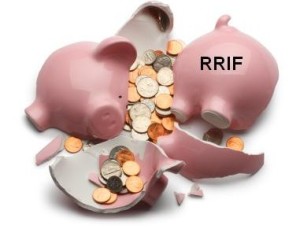Many Canadians are aware that you can open a U.S. dollar bank account at most Canadian financial institutions.
But did you know that you can also open a U.S. dollar investment account through many different investment companies?
The following are reasons why you may wish to consider opening a U.S. dollar investment account.
Reduce the cost of U.S. dollar conversion
Every time that you convert Canadian dollars to U.S. dollars (or vice versa), you will pay a fee to the financial institution that makes the conversion for you. That fee is known as the currency spread, and can usually be noticed by looking at the difference between the “bid” and the “ask” prices displayed by the financial institution.
For example, if the current spot exchange rate is quoted as $1.35 Canadian for each U.S. dollar, the bid (or price that you will receive for selling U.S. dollars) might be $1.32 and the ask (or price that you must pay to purchase U.S. dollars) might be $1.38. So, every time you buy or sell U.S. currency you lose 3 cents per dollar. If you are regularly converting currency, that becomes very expensive!
Buying or selling U.S.-listed securities in a Canadian dollar investment account is a common example of Canadians paying unnecessary currency conversion costs, allowing the broker to pocket the currency spread on buys and sells, dividends or interest paid. The more that you buy and sell, the more that you lose. These costs can be eliminated by simply owning your U.S.-listed securities in a U.S. dollar investment account instead since there is no need to convert currency on every transaction.
Hedge the impact of currency exchange rates
Have you ever felt like you had to limit your spending on travel to the U.S. because the value of the Canadian dollar was depressingly low? Or how about not ordering that item located in New York on eBay because it was priced in U.S. dollars which made it too expensive? The value of the Canadian dollar relative to the U.S. dollar has fluctuated greatly over time. In the past few decades alone, the exchange rate has ranged from more than $1.60 Canadian per U.S. dollar to less than $1.00 – yes, the Canadian dollar has on occasion been worth more than the U.S. dollar!
But why leave it to chance? If you have a portion of your investments denominated in U.S. dollars, you can always draw from it when you need it. You won’t pay conversion costs, and the current exchange rate should not matter because you don’t have to convert anything. For folks who require the frequent use of U.S. dollars for business, travel, or shopping, a U.S. dollar investment account can make a lot of sense.
For a simple illustration, consider a shrewd Canadian investor who vacations in Orlando, Florida for one week in February every year. The typical expense for this trip each year is about $5,000 U.S. dollars. This investor opened a U.S. dollar investment account and invested $100,000 U.S. dollars in an income-oriented investment portfolio that consistently earns 5% per year. This investor should never have to worry about exchange rates, or conversion costs since $5,000 U.S. dollars can easily be withdrawn every year!
Eliminate PFIC reporting (for U.S. citizens living in Canada)
Unfortunately for U.S. citizens living in Canada, Uncle Sam requires you to continue filing U.S. income tax returns. Also unfortunately, the I.R.S. requires additional reporting requirements for Passive Foreign Investment Corporations (PFICs), which may result in additional taxes owing. If you own any mutual fund or exchange traded fund issued by a Canadian company, it is considered a PFIC. Regulations require that all mutual funds purchased in Canada, must be issued by a Canadian company. Unless you enjoy the extra reporting requirements, this can be problematic for some investors. Continue Reading…







